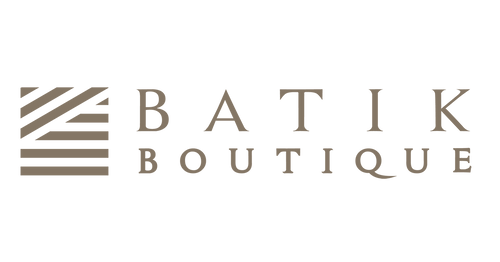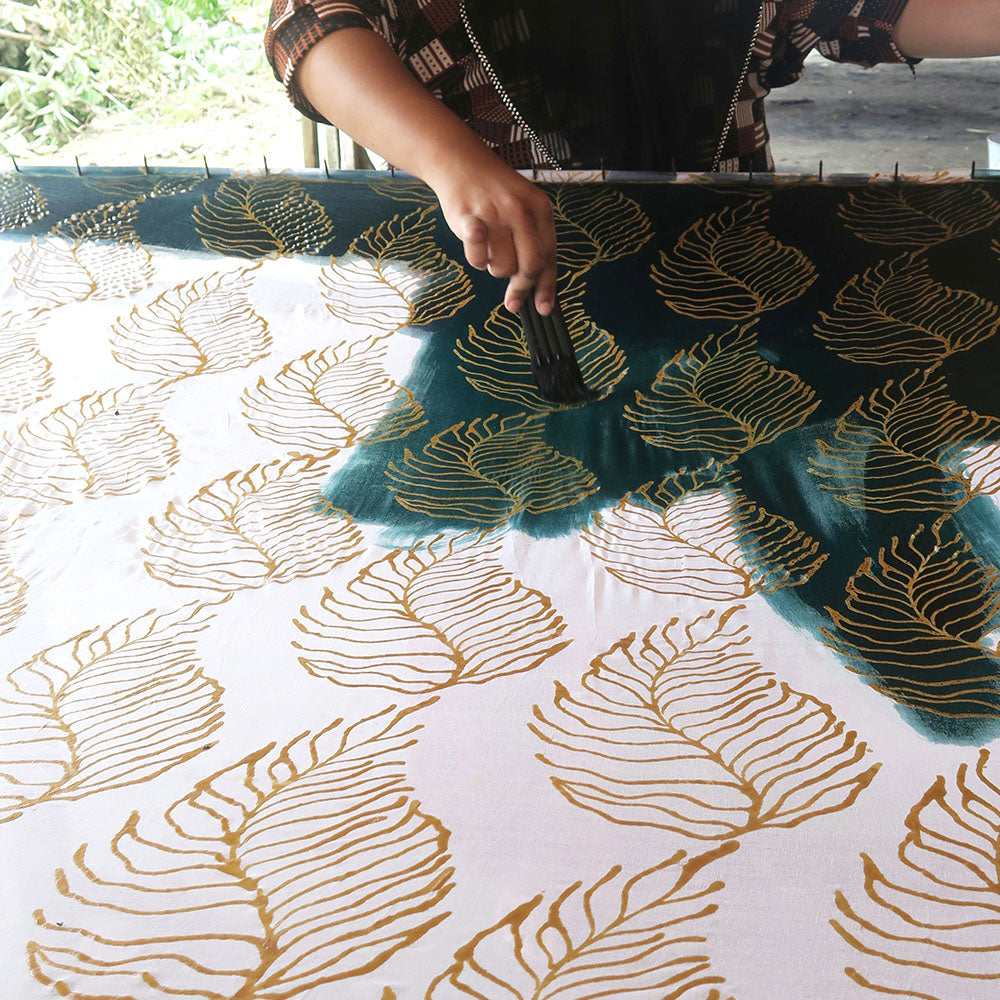Batik, A Thriving Ancient Art in Malaysia with Batik Boutique


Batik is an ancient art that has been practised for over 2,000 years across Asia and parts of Africa. The complex dyeing process of creating batik involves a technique of wax-resist dyeing applied to whole, fibrous fabrics. This allows the artisan to colour selectively by soaking or painting the fabric in one colour, removing the wax with boiling water, and repeating if multiple designs and colours are desired.
A Piece of History
While the true origin of batik is still a mystery, there has been evidence of its existence in various Asian countries as far back as two millennia ago. Batik certainly left a bigger mark in history when it reached Southeast Asia, especially Malaysia and Indonesia.

Malaysian batik and Indonesian batik are very different in their design and expression. Indonesian batik tend to use more earthy tones such as red, brown and navy. Its motif also tends to be intricate, figurative and mystical as well as based on animals.

On the other hand, Malaysian batik’s design is more universal with its motif being more abstract, geometric and floral-based. Batik in Malaysia was started around the 1920s by a renowned batik artisan named Haji Che Su. He was the inventor of batik stamps using copper metal as a heat conductor when using wax, allowing him to recreate a consistent pattern on the fabric.
Crafting the Art
There are two methods mainly used in creating batik. The first method is a hand-painting technique called “canting”. This technique uses a metal tool shaped like a pipe with a wooden or bamboo handle. The container attached to it is filled with molten wax to trace the outlines of the designs on the fabric and later painted with colour dyes.

This method requires the artisan to be really meticulous, composed and precise to ensure the tracing of the wax is smooth and unkempt. The artisan also has to ensure the wax inside the tool is maintained at the optimal temperature for a better result.

The second method of creating batik is block printing or “cap” using a tool called batik block. This hand-carved tool is one of the oldest, traditional tools used in the making of batik in Malaysia. Batik block is an art in itself and is used to easily create unique, repeating patterns to create batik.

The block is dipped into molten wax and stamped onto the fabric, easily printing the pattern. The entire process is repeated until the fabric is printed with enough patterns as desired by the artisan. Then, the fabric is soaked in dye and later boiled with water to remove the wax, leaving the patterns visible in their original white colour.
Thrive for Posterity
At some point after Malaysia achieved independence, batik was upheld as a national attire for formal occasions. Unfortunately, batik was losing popularity in the 90s but with the help of the government and entrepreneurs, batik regained its popularity in an effort to preserve this national heritage in modern times.

In 2009, Batik Boutique came into being as an effort to upskill and empower artisans from marginalised communities to produce fair fashion, home goods and accessories made from batik for both a Malaysian market as well as a global market. Batik Boutique is on a mission to disrupt the cycle of poverty in Malaysia by providing employment opportunities, sustainable incomes, and skills to achieve financial independence.

Batik Boutique works with rural and urban batik artisans across Malaysia to create batik textiles on natural fibres. They are then sent to the seamstresses at their training centre to create various products with beautiful designs.
Through this business model, they are able to create meaningful changes to the circumstances of marginalised communities by providing them employment opportunities, sustainable incomes, and skills to achieve financial independence. To date, Batik Boutique has worked with over 300 artisans and impacted the lives of more than 1,400 local beneficiaries.

Now, Batik Boutique has produced a variety of products made by these artisans and seamstresses, ranging from shirts to face masks to tote bags and more. The designs are more modern than typical batik art, adapting to modern times and style as well as catering to a wider, younger demographic. This past year, Batik Boutique began to pivot during Covid as was required by so many SME’s to expand in e-commerce. This challenge led them to focus on their mission to expand Malaysian batik globally.
Batik Boutique has become one of the faces for Malaysian batik as they are bringing it to thrive on the global stage. Batik Boutique has not only engraved their brand in the local scene but also grown to be an international brand, shipping products to over 40 countries and partnering with multinational companies such as Spotify, Kotex and Kerry.

It is encouraging that batik is being recognised internationally and appreciated by people all over the world, integrating this amazing art into daily life and style. At Batik Boutique, each product is made with a unique story of its own carrying the will and passion of the people who made them in order to make a better living for themselves and their families.
0 comments


